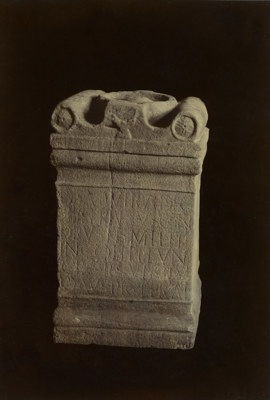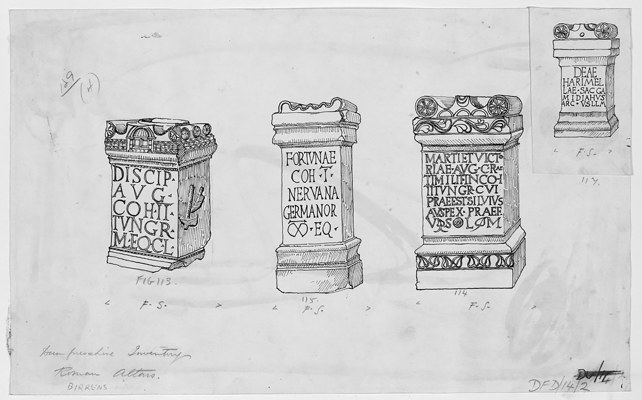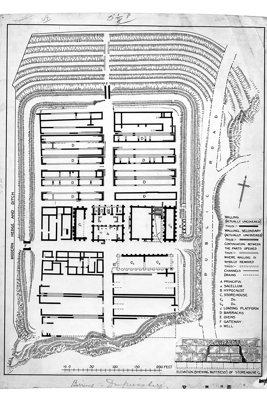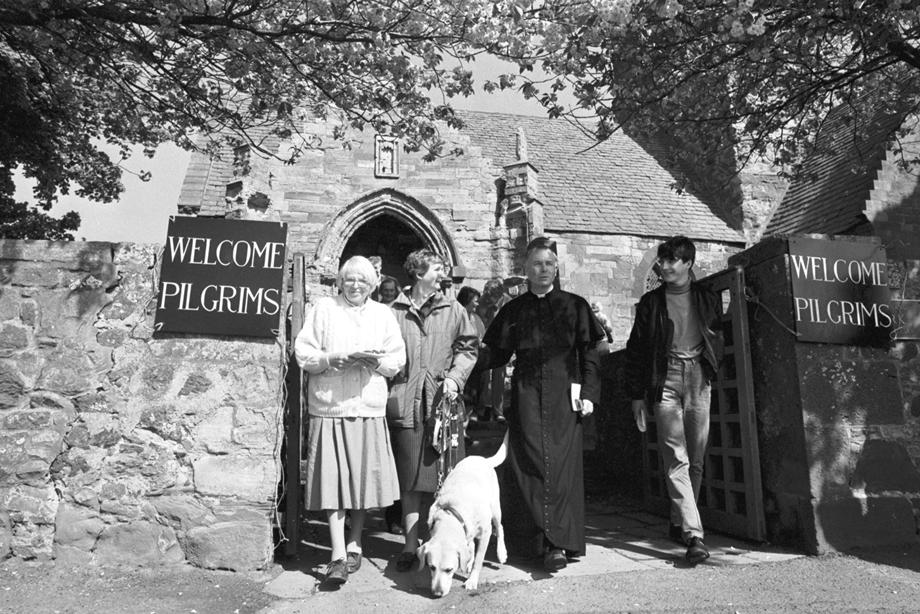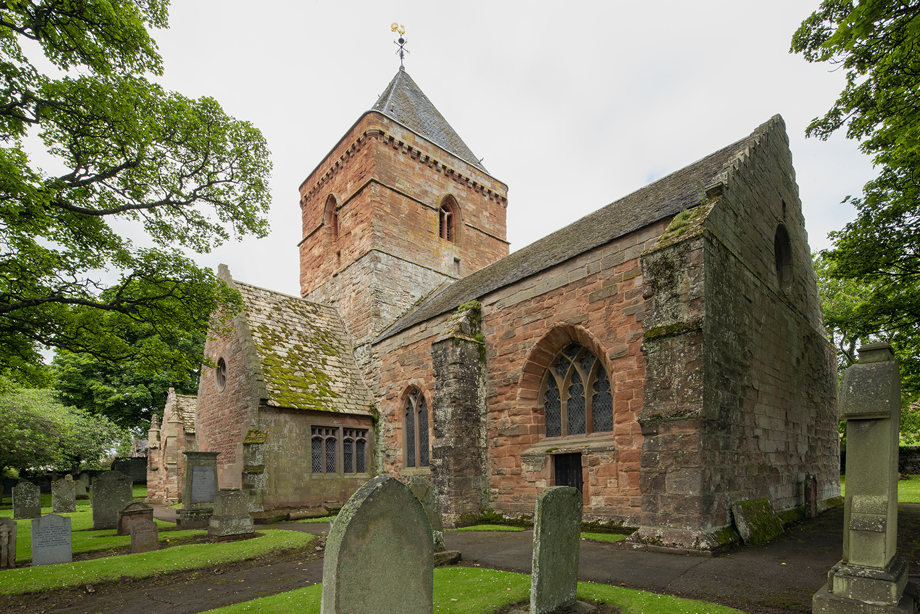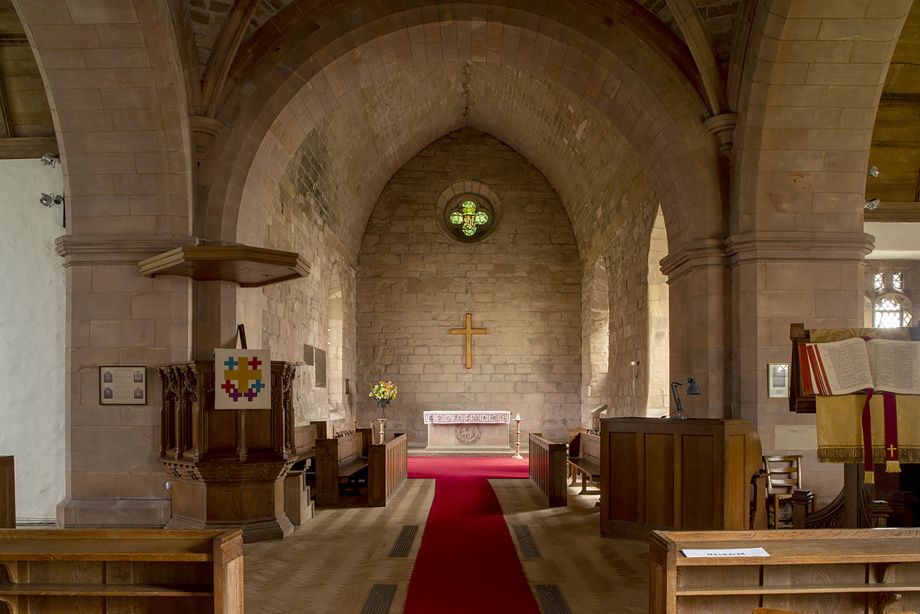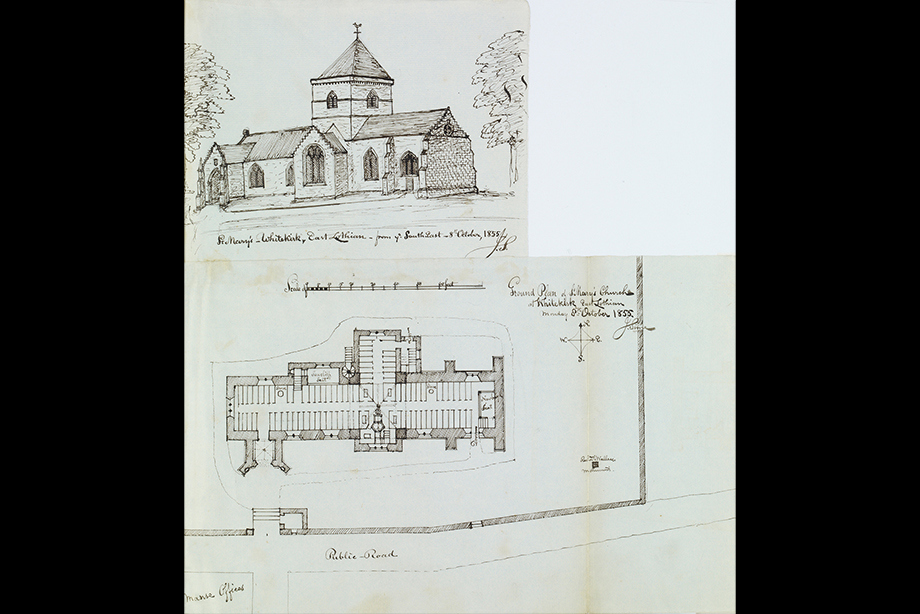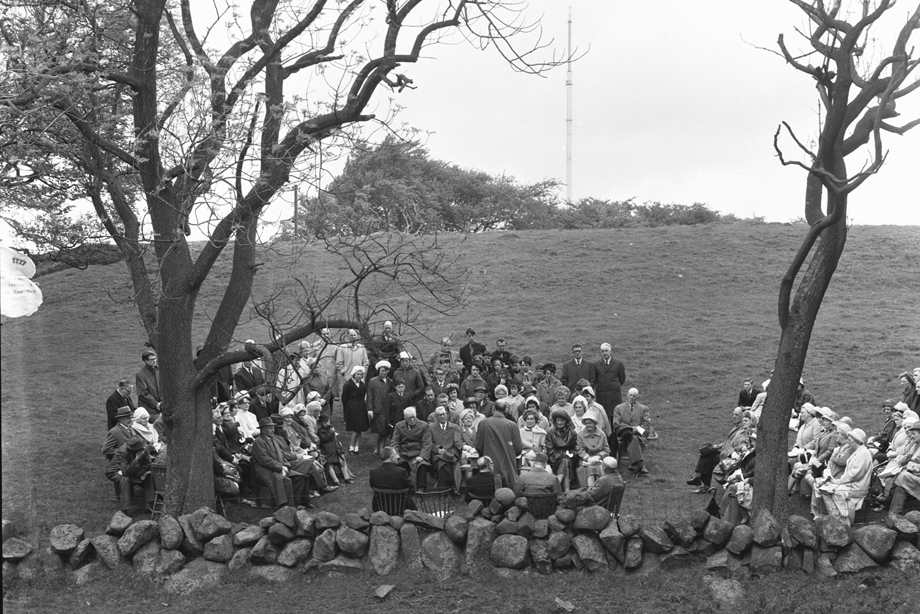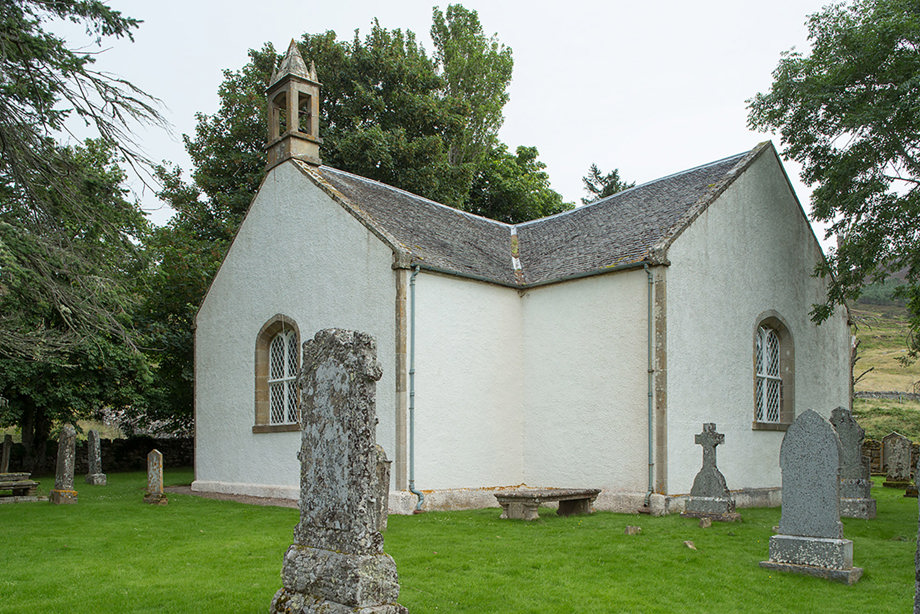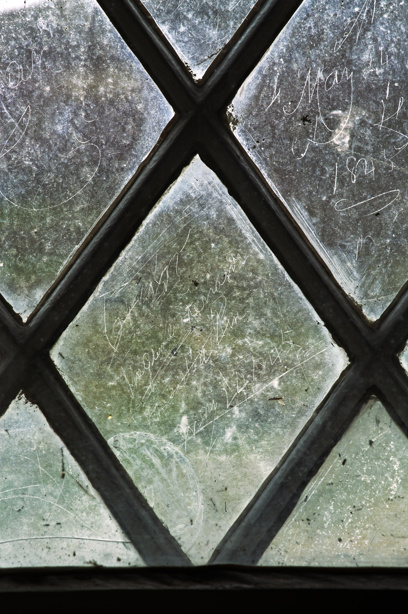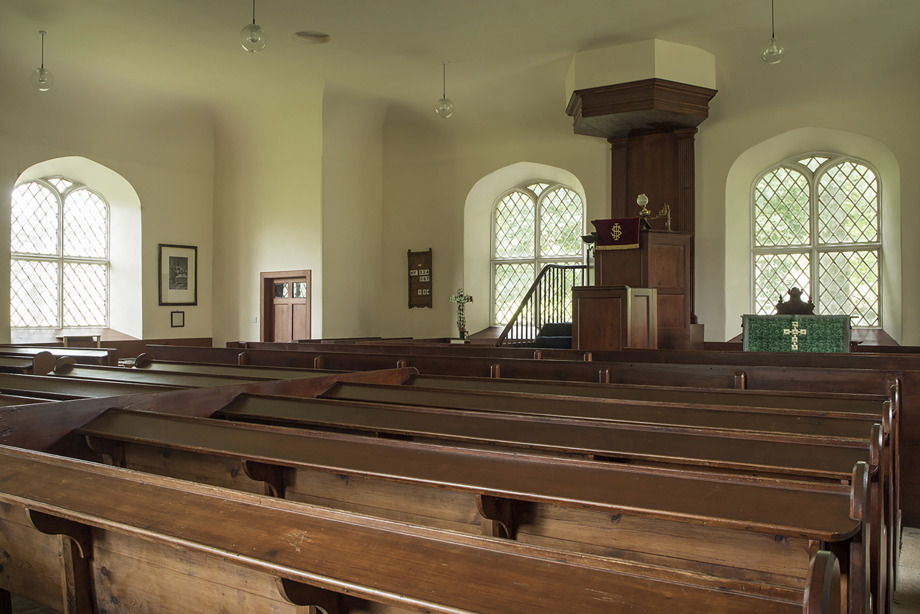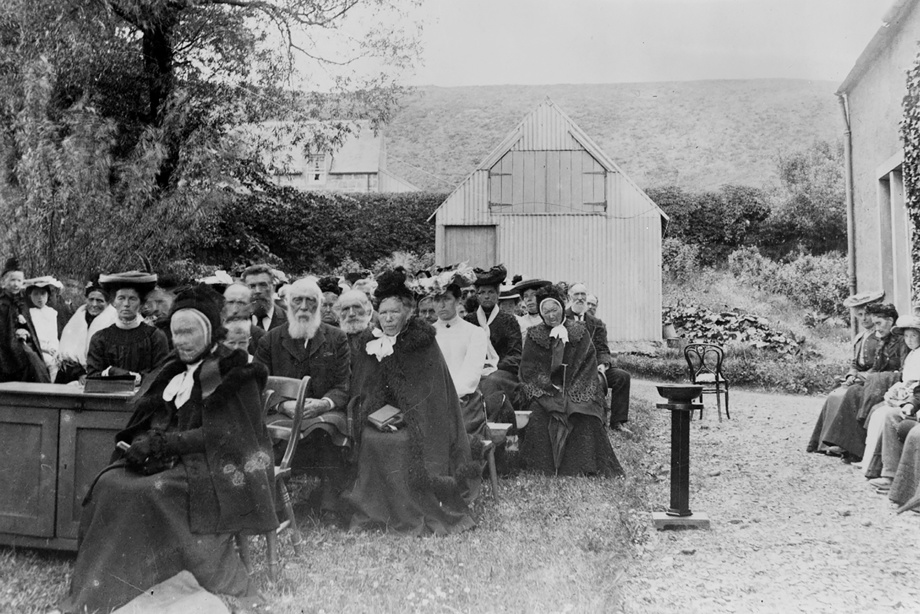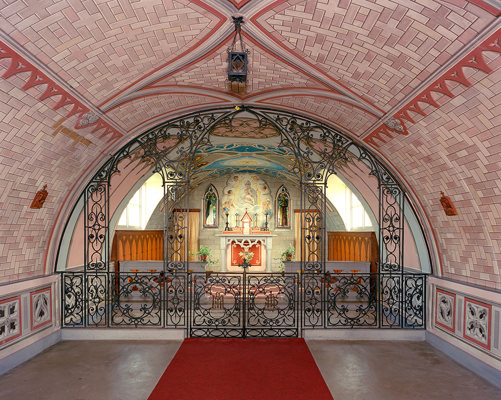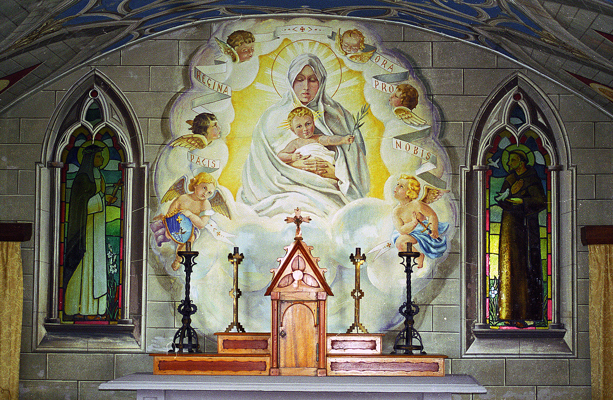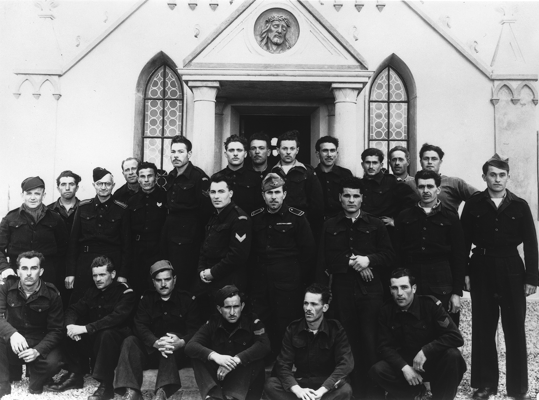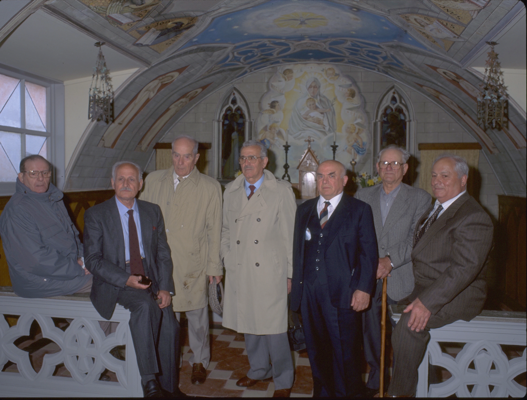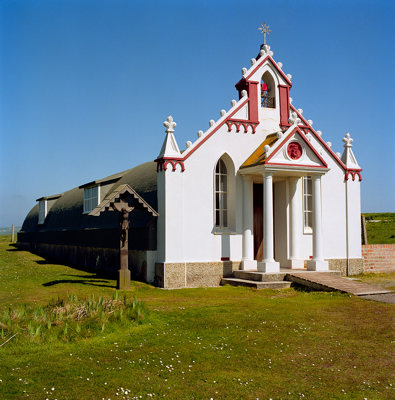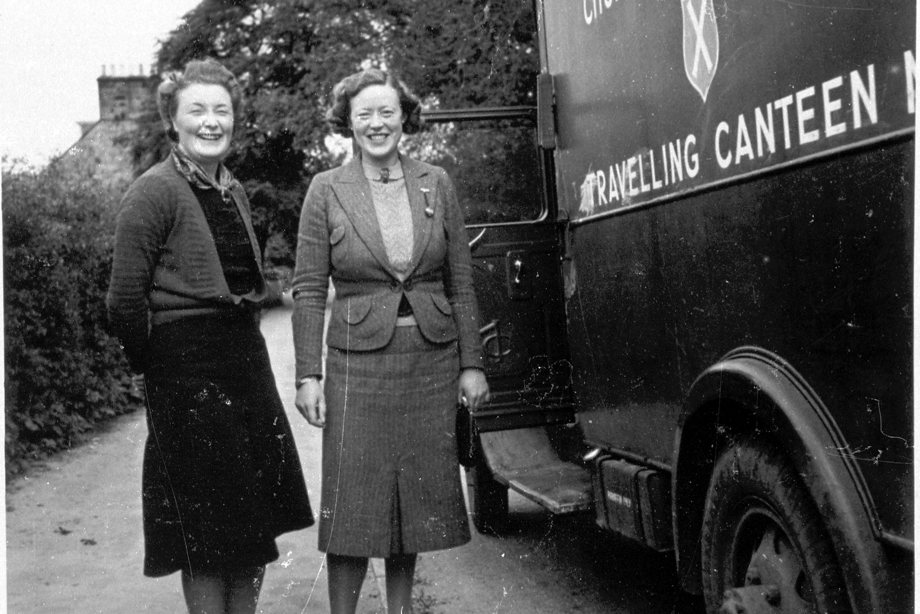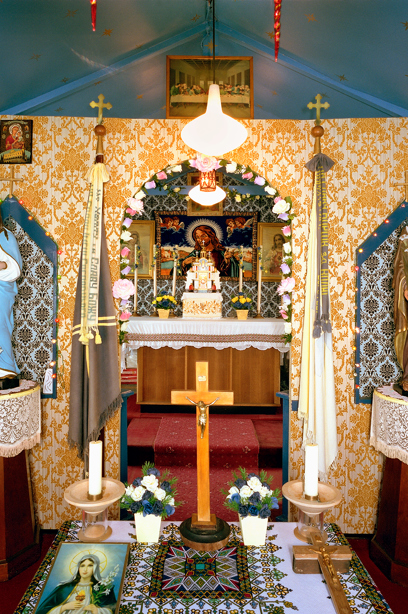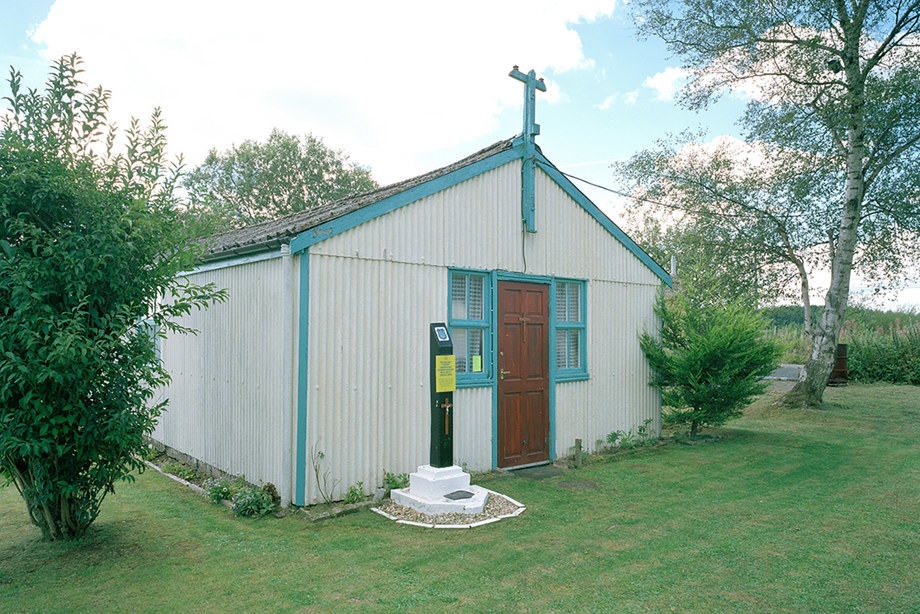In times of distress, a place of prayer can often be where spiritual comfort and support can be found. The chapels created by prisoners of war, in the style of churches found in their distant homelands for example, provided them with reassuringly familiar sanctuaries.
A church can also be a physical refuge and place of safety, as it was for a community evicted from their homes during the Highland Clearances. However, for many, it is faith and not the building that matters most.
Periodic splits within the Presbyterian church in Scotland and the breaking apart of individual church congregations, often resulted in people - who had been evicted from their local churches - gathering to worship outdoors until new accommodation could be found.
Whether for illegal 16th century Covenantor meetings or Free Church members - newly split from the Church of Scotland in the 19th century - it is clear that having a space to gather and pray was of paramount importance.
In times of need, faith groups can also be very proactive beyond their place of worship. Among many examples was the programme of travelling canteens organised by the Church of Scotland to distribute food to the hungry during World War II.
Altar, Birrens Roman Fort, Dumfries and Galloway
Faith can be a source of great comfort, particularly for those who find themselves far from home. An altar found at Birrens Roman Fort shows us how important it was for a soldier - stationed at this outpost of Hadrian’s Wall - to express their belief.
Birrens (or Blatobulgium, as it was originally known) was built around 120 AD and abandoned some 60 years later. Several carved stone (votive) altars were found in this area as Birrens was one of many Roman fortifications constructed across Southern Scotland; Roman presence can be found in Scotland from the Antonine Wall on the northern Roman frontier to Hadrian’s Wall further south.
The votive altars discovered at Birrens replicate the ones that would have been found in all Roman homes, where daily offerings were made to each household’s choice of gods. These tributes were made for specific purposes such as good health or a safe journey.
This altar is of particular interest because it was erected not by a Roman but by a member of the Condrusi people from a region that is now Belgium. This soldier was serving as an auxiliary in the Roman army and, given his dangerous situation, he wanted to honour Viradechtis, protector goddess of the Condrusi.
Whitekirk, East Lothian
Whitekirk Parish Church went from being a sleepy rural place of worship to a bustling pilgrimage destination from around 1100. This was due to reports of miraculous healing at a nearby well, named Our Lady’s Well.
The church was placed under the protection of King James I, who subsequently built hostel accommodation for the large numbers of women visiting the well in the belief that it would help them conceive.
Regardless of its importance to women in the past, the church was allegedly set on fire by suffragettes in 1914. Thankfully, the structure was not significantly damaged and a sensitive restoration was carried out by prolific Scottish architect Robert Lorimer.
Memorial Covenantors’ conventicle at Shottsburn, North Lanarkshire
In 1638, the National Covenant had been signed by those who sought to defend the Presbyterian church against influence from England. In particular, James VI had ordered the Church of Scotland to adopt a system of bishops. This move was deeply unpopular as it was seen as an attempt to reduce the influence individual ministers had within the wider church.
James’ son, Charles I, also tried to introduce further changes to align the Church of Scotland with the Church of England. This led to widespread revolt in Scotland, one outcome of which was the holding of conventicles.
Despite being illegal, these services were particularly well attended and several thousand people often met up at field-conventicles despite the State threatening attendees with the death penalty.
People living in the Shotts area were strong supporters of the National Covenant and many conventicles were held in a field nearby (as seen in the adjacent illustration). In 1966, a gathering was held here to commemorate the Covenantors who rebelled against the Scottish government at the battle of Rullion Green, 300 years earlier. A local man, William Smith, who died at this battle is buried in the local church.
Croick Parish Church, Highlands
Over the centuries, churches have been used as places of sanctuary during times of trouble or conflict, as well as places of worship.
In this example, crofting families were cleared from Glencalvie estate in 1845 to make way for a new sheep farm. With nowhere else to go, they sought refuge in Croick Parish’s churchyard.
People of all ages sheltered in a makeshift camp for a week, during which time a baby was born. That baby later grew up to become the ferryman at Ardgay, but the fate of the other crofters is mostly unknown.
However, they speak to us today through the inscriptions they scratched on the church windows to tell of their situation. In one example, the window pane reads, "The Glencalvie tenants resided here May 24 1845".
Free Church Congregation, Lochcarron
Since the foundation of organised religion, different beliefs and strong differences of opinion on matters of faith have led to schisms, or the breaking apart of religious groups. In 1900, the Free Church joined the United Presbyterian Church to become the United Free Church, but this was opposed by some Free Church members including part of the congregation of Lochcarron.
Those who opposed the amalgamation of the congregations preferred to hold their services outdoors rather than attend services at the church they used to belong to. They eventually built a temporary shelter for worship but, until then, they took what furniture they could gather and arranged a makeshift church outside.
In 1904, after a test case in the House of Lords, Free Church members were given the right to once again occupy the church buildings from which they had been excluded by the United Free Church.
In Lochcarron, the Free Church members moved back into their church and the United Free Church congregation, which had been occupying it, built themselves a new place of worship. Following the union of the United Free Church with the Church of Scotland in 1929, this new building became Lochcarron Parish Church.
Italian Chapel, Orkney
Challenging circumstances often prove to be a powerful catalyst for creativity. This is especially true of those wanting to create a sacred place to pray and worship during times of conflict.
Italian prisoners of war, captured in North Africa and incarcerated on the Island of Lamb Holm during the Second World War, used a pair of Nissen huts to create a chapel that would remind them of home.
The prisoners used scrap materials in an ingenious way. For instance, they salvaged tiles from a sunken German blockship to decorate areas within the chapel. The interior was painted by Domenico Chiocchetti, a church decorator in peacetime. He used a prayer card with the image of the Madonna and Child, given to him by his mother, as inspiration for the design he painted above the altar.
The chapel survived the war and became a symbol of reconciliation; today it is regularly visited by families of the prisoners as well as over 100,000 visitors a year.
Church of Scotland Travelling Canteen
The importance of being of service to others is a value or virtue shared by many religions. For example, within Christianity, charitable activity has always been a fundamental part of practising the faith, such as the sharing of food with people who do not have enough to eat.
During World War II, when food was strictly rationed and many went hungry - especially the elderly and those with little or no income - the Church of Scotland set up mobile canteens which delivered supplies to those in need around the country. These canteens were also used to provide a comforting break for the armed forces as well as providing vital relief in areas that had been recently bombed.
With food poverty a growing issue in Scotland today, providing food to those suffering from hunger continues to be an issue that charities address. Some of Scotland’s food banks are still run by church organisations, such as the Church of Scotland, as well as other faith and secular groups.
Ukrainian Chapel, Hallmuir Camp, Dumfries and Galloway
Having a safe place to pray can be a vital support and comfort to those uprooted from their homes and communities.
In 1947, Hallmuir Camp housed 465 Ukrainian prisoners of war. Most of the prisoners had been farmers and they were, therefore, put to work on farms around the camp.
During this time, they were provided with a small army hut, previously used as a chapel by Italian prisoners. With the little at their disposal, they went on to transform it into a beautifully decorated Ukrainian church.
A colourful interior was painted and a chandelier, fashioned from tinsel and candlesticks, was created using shell fragments. After the war, many of the men remained in the area having settled into the local community.
In 2022, this chapel became a focal point for those in the local community, around Scotland, and further afield who want to help those caught up in Ukraine’s conflict.
Places for Prayer continued
Find out why, over the last century, the construction of contemporary places of prayer slowed and, then, boomed. Learn how some of Scotland's religious buildings have changed in more recent times.

